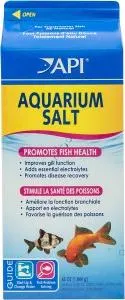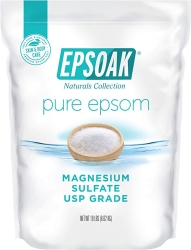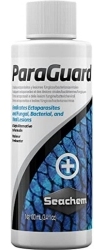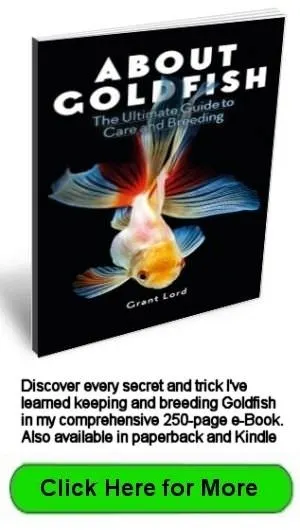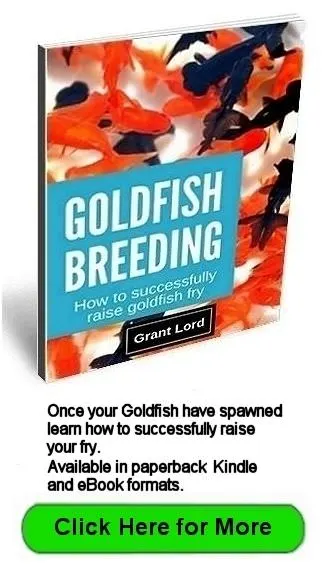- Home
- Disease Causes
- Common Goldfish Diseases
- Goldfish Dropsy Disease
Goldfish Dropsy Disease Treatments
Introduction to Goldfish Dropsy Disease
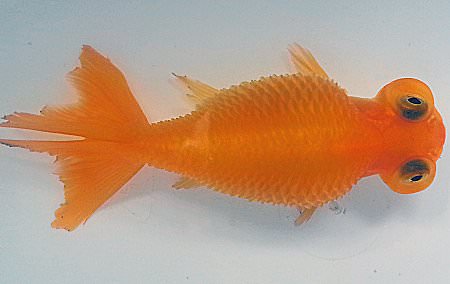 Goldfish with advanced dropsy disease.
Goldfish with advanced dropsy disease.Dropsy disease is caused by kidney failure.
Dropsy causes the Goldfish to become bloated and its scales to become distended.
The kidneys shut down, and the fish retains fluid. This fluid retention causes the fish to bloat and the scales to distend as fluid builds up underneath them.
Last Updated: 02-25-2025 by Grant Lord.
Symptoms of Dropsy in Goldfish
The first symptoms of the disease start to show when the fish appears
bloated or scales behind the head distend. As the disease progresses,
all the scales begin to distend, moving gradually towards the caudal fin
until the fish looks like a pine cone that has opened. This appearance
is why dropsy is also known as pine cone disease.
One or both eyes may be pushed out from the eye socket as fluid builds underneath.
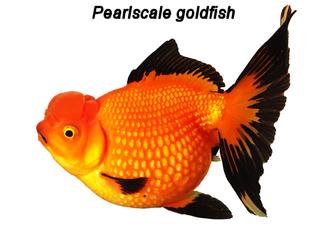 Pearlscale goldfish exhibit dropsy-like symptoms.
Pearlscale goldfish exhibit dropsy-like symptoms.The Pearlscale Goldfish is often mistaken as having dropsy because its scales have a raised bump in the middle. The scales on Goldfish with dropsy have a fluid sac under each scale, which pushes the scale away from the body, giving it the characteristic opened pine cone appearance.
The disease doesn’t spread to other fish in an aquarium environment unless caused by a toxin.
Causes of Dropsy
Dropsy is a renal (kidney) failure symptom and something has damaged the kidneys.
Older fish in poor condition often develop the disease or fish exposed to an extended period of low temperatures.
Redness on the body or fins is common, indicating that the fish is in poor condition and its immune system has failed.
The exact cause of dropsy in a fish is unknown unless a necropsy is done after death, which makes treatment difficult.
Excluding toxins, there are three possible causes, bacterial or parasitical attack of the kidneys or cysts.
Bacterial Causes
At a guess, it is probably a gram-negative Aeromonas bacterial disease that has attacked the kidneys, causing them to shut down.
Parasitical Causes
Quoting C M Sandoval from the Czech Institute of Parasitology Biology Centre ACSR, "It is now known that the disease is caused by myxozoan parasites, commonly of the species Sphaerospora auratus, among others. Unfortunately there is at present no effective chemotherapeutic drug against the organism, although Fumagillin has been reported as effective against Hoferellus carassii infection (Yokohama et al.2009)"
Cystic Kidney Causes
There is no treatment available for polycystic kidney disease, where fluid-filled cysts form on the kidney, which leads to overall renal failure.
This condition usually appears in older fish, 8-9 years old.
The first indication of a problem is when the fish starts to swell without showing dropsy symptoms, and the owner thinks the fish is getting into breeding condition or egg-bound.
Toxin-Related Causes
Algal control products with the active ingredient Poly (oxyethylene) (dimethylimino) ethylene (dimethylimino) ethylene dichloride should be avoided as it is toxic to fish and causes internal organ damage leading to dropsy.
I have firsthand experience with this.
Treatment Options
General Treatment Guidelines
There is no easy answer to this condition. If the Goldfish looks like an opened pine cone before you notice it, it is probably too late for treatment.
But that doesn’t mean we shouldn’t try.
Treatment must be started as soon as scales are seen distending behind the head, sooner if the fish appears overly plump and the fish is a male, or it isn't the breeding season.
Move the Goldfish into a sick bay and add a teaspoon of Aquarium Salt per gallon. Also add two teaspoons of Epsom Salts per gallon to the water.
Salt or no salt?
There is some debate about whether salt should be used at all. Some believe salt stresses failing kidney function even further, while others believe raising the water salinity closer to the fish’s internal chemical salinity helps kidney function.
Both arguments are correct, but it is the amount of salt in the water that is important. Salt will not stress the kidneys at low levels but will boost the immune system.
If the fish has external lesions or an injury causing water to enter the body cavity, I would add two teaspoons of aquarium salt per gallon to the water. If the fish has no external injury but some redness to the body or fins, I suggest adding one teaspoon of salt per gallon.
Perfect water conditions must always be maintained to give the fish's immune system the best chance to recover.
Bacterial Treatment
Slowly raise the water temperature into the mid to high 20 degrees C (27-29oC) (81-84oF). This prevents the bacteria from multiplying.
I would also add a general bacterial treatment such as Kanaplex or any Kanamycin-based medication. Follow the directions on the packet for dosage levels.
Several other medications I haven't tried, but others claim are effective, are Ofloxacin, Cefixime, and Augmentin.
For Ofloxacin, crush 50mg into a little water and add the solution to 10 liters (2.6 US gals) of water.
Continue this treatment for 7 days. If there is no improvement after 3 days, start treatment with one of the other two.
Crush 50mg of Cefixime or Augmentin into a little water and add the solution to 12 liters (3 US gals) of water. Continue for no more than 5 days.
If the fish is still eating, only feed it live foods and
medicated fish food that targets dropsy.
Parasite Treatment
As Sandoval states above, there is currently no effective treatment for myxozoan parasites.
Praziquantel has been suggested as a treatment, and again, quoting Sandoval, "praziquantel, a drug that is very effective against schistosome and tapeworm parasites, but effects against myxozoans have not been evaluated as effective to my knowledge".
Preventative Measures
Be very cautious about adding chemicals to your aquarium or pond, even if the manufacturer claims the product is safe.
Older fish seem to benefit from time spent in an outdoor pond over the warmer months.
Always keep water parameters at optimal levels, especially nitrates that can creep up if feeding heavily.
Summary and Conclusion
A multi-pronged treatment must be undertaken because the cause of dropsy in a fish is unknown unless biopsies are examined after death.
- The fish must be treated in a sick bay, in a mild salt bath with perfect water conditions. This means the pH must be around 7.4, nitrates below 20 ppm (parts per million), GH and KH around 8 or above, and the water always fresh, clean, and aerated. Make frequent water changes.
- Feed the fish live foods if possible or frozen if out of season.
- To treat a possible bacterial infection, slowly raise the water temperature to the mid to high 20 degrees C (27-29oC) (81-84oF). Add a general bacterial treatment and feed medicated food if the fish is eating.
- To treat a possible internal or external parasitical infection, adding a Praziquantel-based medication to the water won’t do any harm.
Keep up the treatment until there is a noticeable improvement. When the swelling has gone, start reducing the salt concentration at each water change.
Once the fish behaves and eats normally for a few weeks, it can be returned to its aquarium.
Top of Goldfish Dropsy Disease Treatments page
